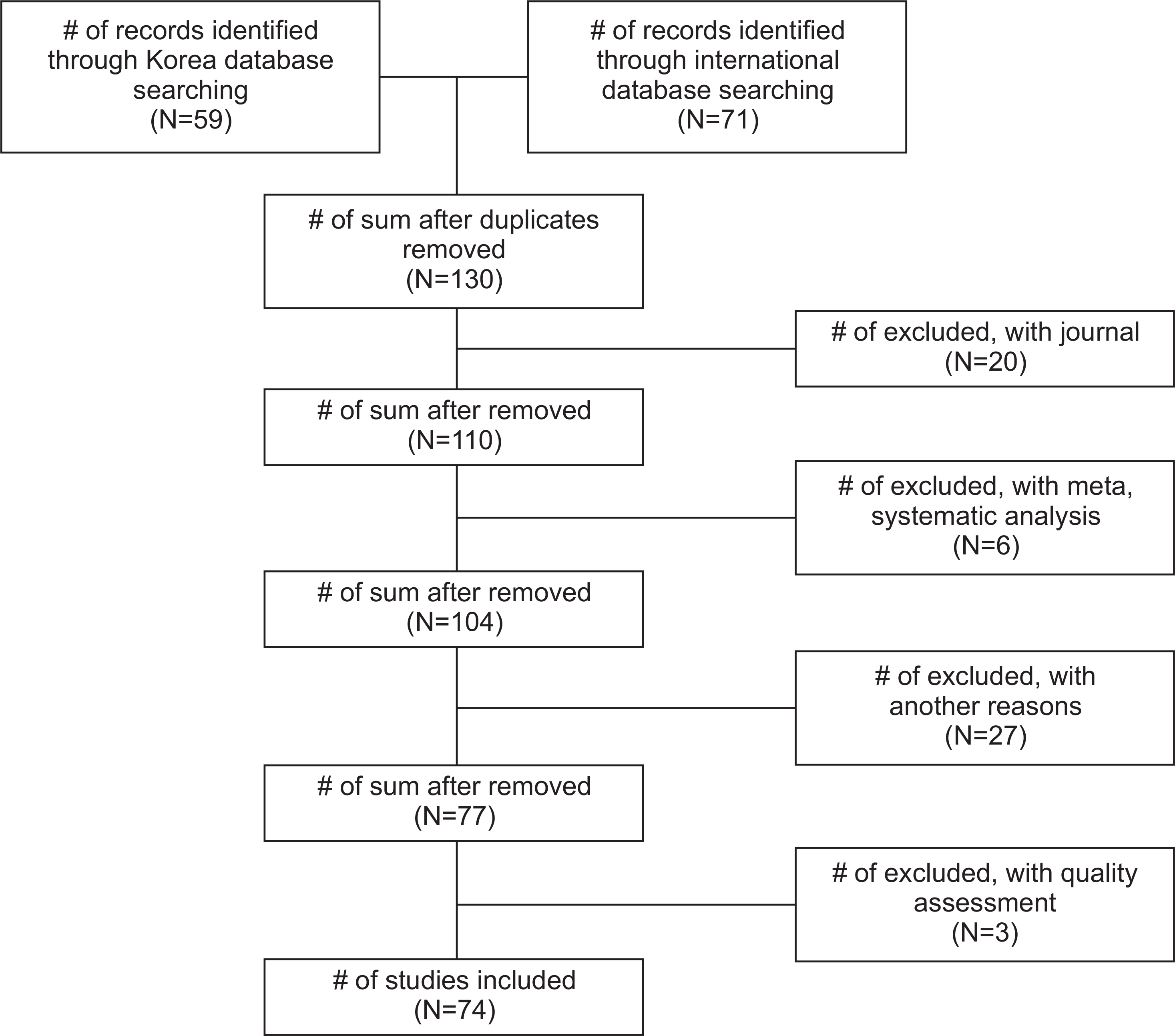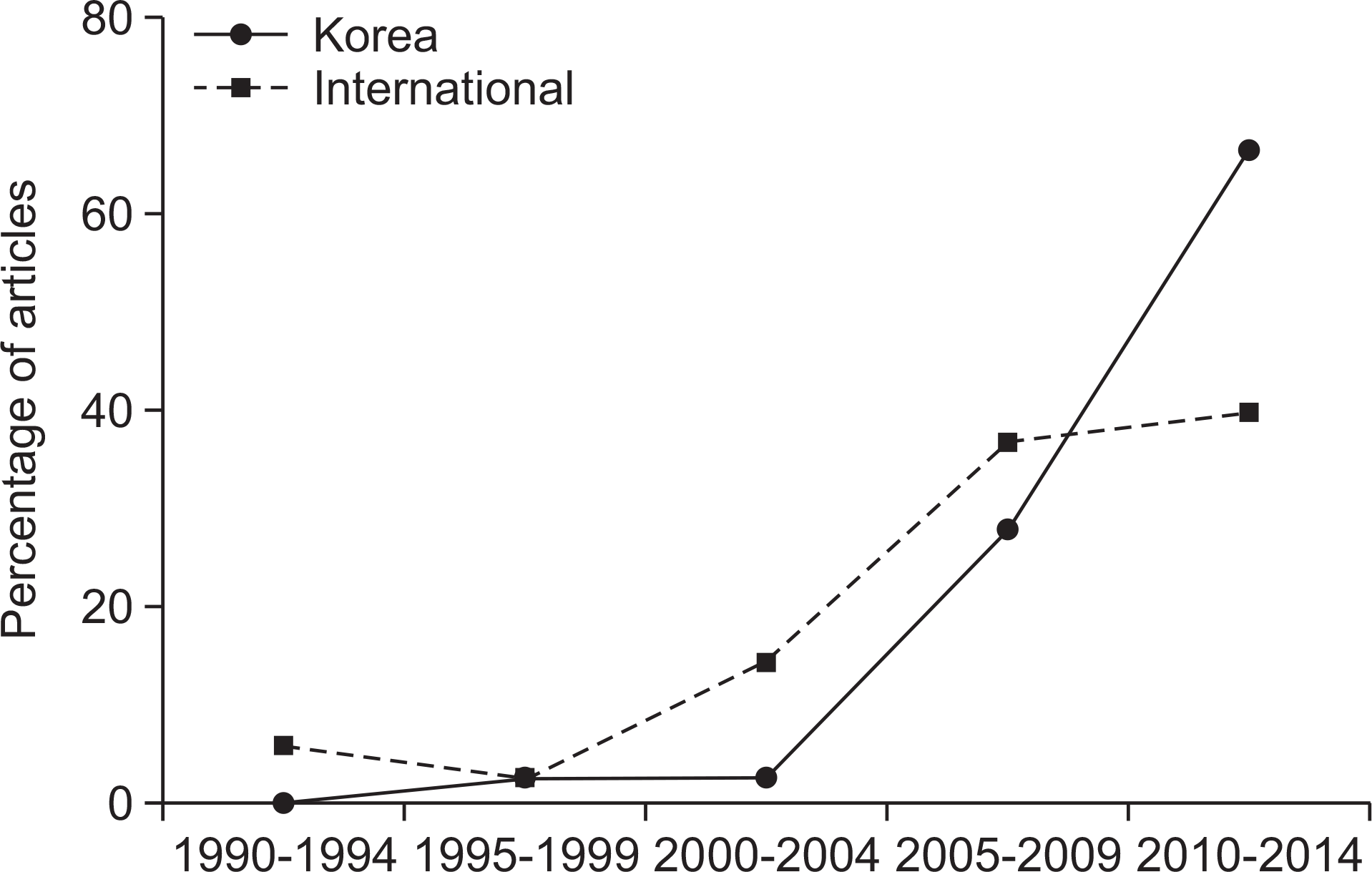1. Cohen LA, Snyder TL, LaBelle AD. Correlates of dental anxiety in a university population. J Pub Health Dent. 1982; 42:228–235.

2. Kleinknecht RA, Klepac RK, Alexander LD. Origins and characteristics of fear of dentistry. J Am Dent Assoc. 1973; 86:842–848.

3. Jun BH. Descriptive literature review on dental fear in Korea (2004-2012). J Korean Soc Dent Hyg. 2014; 14:251–259.
4. Hong SH, Oh JS. A relevant factor analysis on dental treatment fear in some high school students. J Korean Soc Dent Hyg. 2012; 12:741–749.

5. Choi JS, Kim KK. Relationships between dental fear and dental services utilization with respect to oral health promotion. J Korean Soc Health Educ Prom. 2006; 23:47–65.
6. Choi JS, Han SJ, Lee MJ, Han GS. Factors associated with the dental fear level and sub-factors of the dental fear survey scale. J Korean Acad Oral Health. 2009; 33:51–61.
7. Choi SS, Kim JY, Song KB, Lee SK. Analysis of the related factors of dental fear among teenagers in private dental clinics. J Korean Acad Oral Health. 2004; 28:495–503.
8. Dobros K, Hajto-Bryk J, Wnek A, Zarzecka J, Rzepka D. The level of dental anxiety and dental status in adult patients. J Int Oral Health. 2014; 6:11–14.
9. Schuller AA. Are there differences in oral health and oral health behavior between individuals with high and low dental fear? Community Dent Oral Epidemiol. 2003; 31:116–121.

10. Jeon YS. The effect of music listening on anxiety and pain reduction of dental treatment. Korean J Music Therapy. 2004; 6:35–47.
11. Kritsidima M, Newton T, Asimakopoulou K. The effects of lavender scent on dental patient anxiety levels: a cluster randomised controlled trial. Community Dent Oral Epidemiol. 2010; 38:83–87.
12. Cummings G, Estabrooks CA. The effects of hospital restructuring that included layoffs on individual nurses who remained employed: A systematic review of impact. Int J Sociol. 2003; 23:8–53.

13. Estabrooks CA, Floyd JA, Findlay SS, O’Leary KA, Gushta M. Individual determinants of research utilization: a systematic review. J Adv Nurs. 2003; 43:506–520.

14. Estabrooks CA, Goel V, Thiel E, Pinfold P, Sawka C, Williams I. Decision aids: are they worth it? a systematic review. J Health Serv Res Policy. 2001; 6:170–182.

15. Lee JS. Education·psychology·society research methodology. Seoul: Kyoyookbook;2012. p. 174–179.
16. Carter AE, Carter G, Boschen M, AlShwaimi E, George R. Pathways of fear and anxiety in dentistry: a review. World J Clin Cases. 2014; 2:642–653.

17. Kim SK, Kim MH, Choi HJ, Hwang JG. Related factors to dental fear in some adults. J Korean Soc Dent Hyg. 2014; 14:881–886.

18. Lee HY, Na MH, Lee YH. Analysis of related factors for dental fear. J Korean Soc Dent Hyg. 2012; 12:57–65.

19. Kim JH, Jeong HJ, Kim HJ. A Study on personal temperament, dental knowledge and dental fear of high school students. Korean J Health Service Management. 2013; 7:1–12.





 PDF
PDF ePub
ePub Citation
Citation Print
Print




 XML Download
XML Download